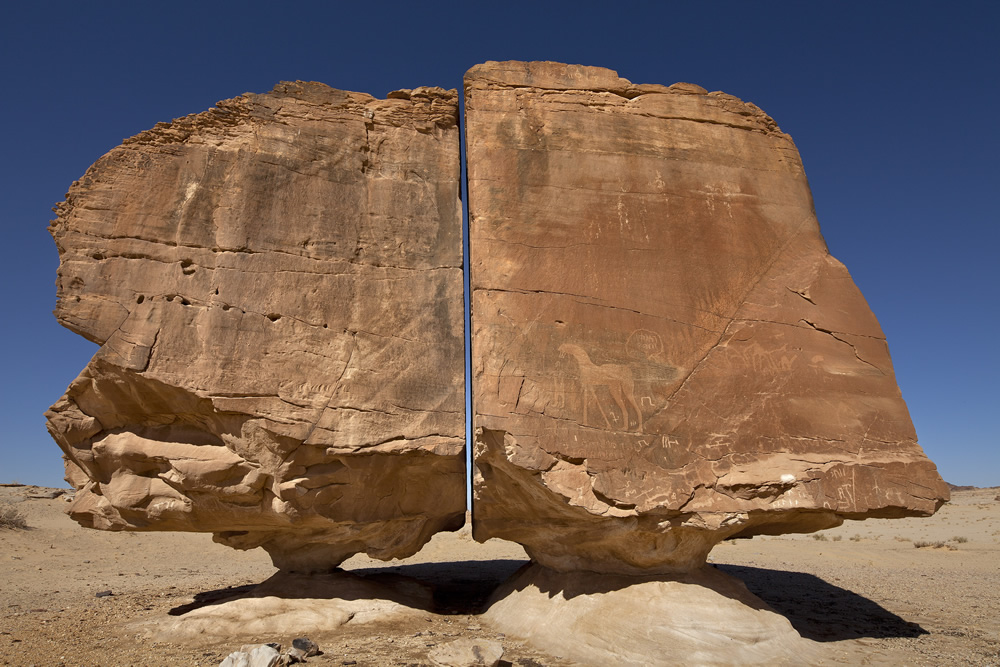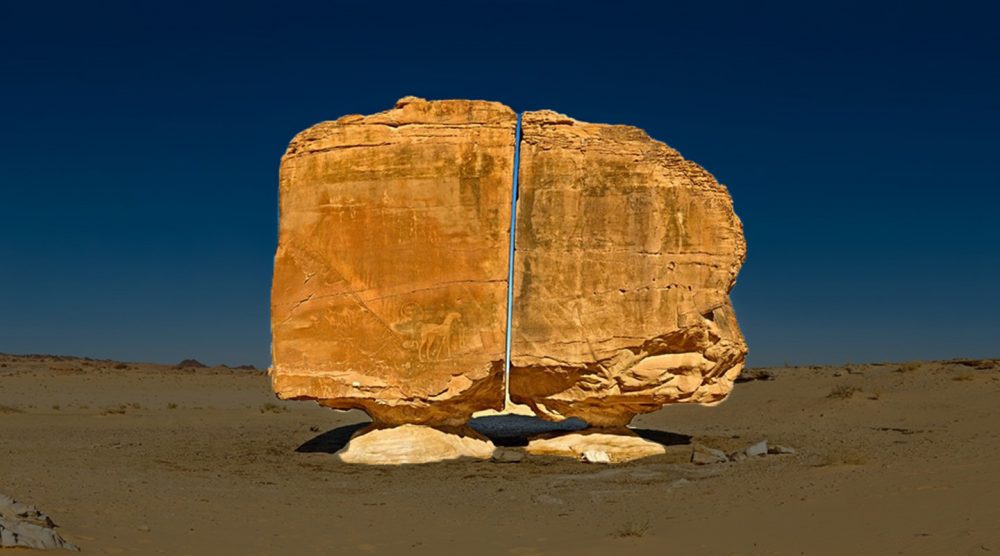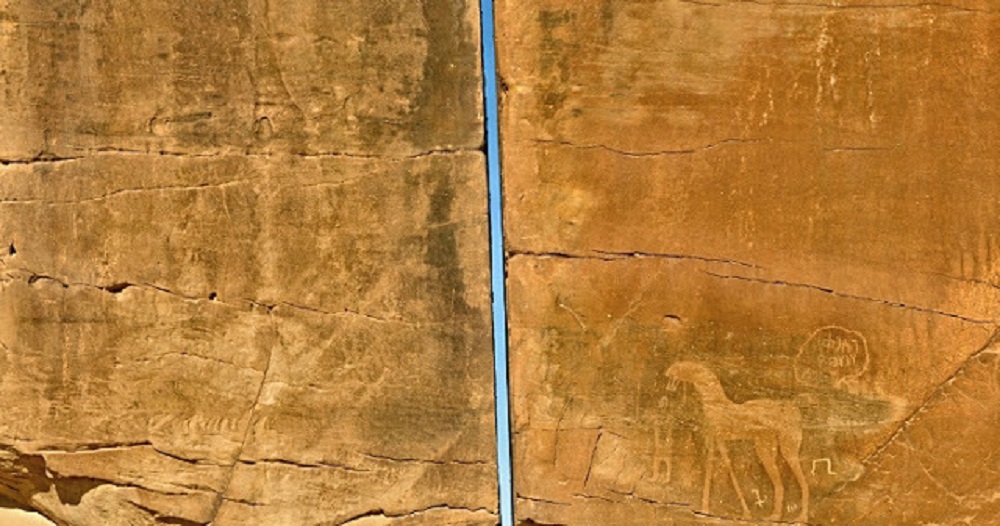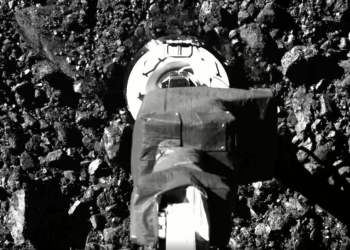This ancient site, adorned with petroglyphs that date back thousands of years and evidence of human activity from the Bronze Age, is a striking landmark. Its most astonishing feature is the precise split that divides the formation into two sections, each balanced on a slender pedestal. This seemingly impossible natural phenomenon has sparked curiosity and debate, as many question how such a structure could form naturally.

There are three leading geological explanations for this spectacular formation. The two towering boulders, each approximately six meters (20 feet) high, are separated by a perfectly smooth fissure. This central split, an iconic feature of Al Naslaa, is adorned with petroglyphs believed to be up to 4,000 years old. Although the exact cause of the fissure remains uncertain, similar formations around the world offer potential clues.
In the United States, Balanced Rock showcases a similar “unstable equilibrium,” where different layers of sedimentary rock erode at varying rates, often resulting in pedestal-like structures. Over time, as the supporting material erodes, these ancient formations become increasingly vulnerable to collapse.

Wind, rain, sand, and water gradually shape these structures over vast geological timescales. New Zealand’s “Split Apple Rock” also exhibits an almost perfectly symmetrical split, suggesting a comparable process. In granite formations, planes of weakness known as joints allow for water-based weathering, which can cleave boulders apart.

Al Naslaa itself has another cracked joint parallel to its main fissure, potentially offering further insight into its formation. Across the Arabian Peninsula, the erosion of sandstone and limestone has created numerous breathtaking formations.
Earthquakes or fault lines may also have contributed to the creation of Al Naslaa’s distinctive split. While its eventual collapse is inevitable, Al Naslaa remains a captivating and enduring geological wonder, continuing to intrigue and inspire those who encounter it.











